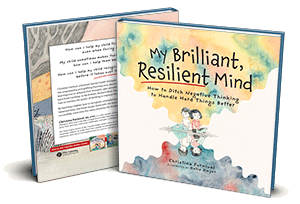Hi there! I’m Christina, a mom of two littles, a licensed mental health therapist, and a children’s book author! Thanks for checking out my site. Look around! I’m sure there’s something here for you! This guest post, written by J Morgan, is about recognizing and identifying speech-language disorders in order to provide early intervention.
Identifying Speech-Language Disorders: What Moms Need To Know
Each year, at least 2% of children in the U.S. are born with a disability. The Learning Disabilities Association of America reports that speech and language disorders are among the most common conditions children suffer with. As a result, they can experience learning and communication difficulties, severely affecting their personal, academic, and social lives.
However, detecting them early on and providing appropriate intervention is key. The right treatment will increase their chances of improving their communication skills.
So without further ado, let’s discuss the signs of speech-language disorders and what to do if you detect them in your children.
Signs of Speech-Language Disorders
Difficulty in forming sounds that makeup speech
When a child says p, b, m, h, and w (1-2 years old) and k, g, f, t, d, and n (2-3 years old) incorrectly, there is a good possibility that they have a speech sound disorder. Another sign is when family or friends struggle to understand what your child is saying. Additionally, distorted or changing sounds when saying the letters r, l, and s could also be a sign of an articulation disorder.
Using fewer or simpler words than their peers
If a child does not babble (4-7 months), making only a few sounds and gestures like pointing (7-12 months), and can only use a few words (1-1.5 years), they may have a language disorder. A few other signs include when a child is unable to put words together to form sentences (1.5-3 years) and has difficulty playing and conversing with other kids (2-3 years).
Repeating sounds, words, or parts of words
Repeating the first sounds of certain words such as “b-b-b-box”, stretching out sounds such as “fffffox”, and speech breaks when saying words are often telltale signs that your child is stuttering or is struggling with disfluencies. If they get frustrated while they are trying to get their words out, this is also a symptom.
Actions to Take After Spotting the Signs
The Process
The first step to take after observing and identifying speech-language issues is to consult a physician who will put your child through a diagnostic process. Maryville University states that a language diagnostic process will see the physician perform a medical examination on the child to filter out other conditions first, such as a sensory impairment. If the exam doesn’t detect anything, a speech-language professional will conduct another screening. This includes administering formal a series of assessments, talking to you and your child’s teachers regarding their problems, and conducting an articulation screening.
Treatment Options
Based on the results, your child might have to go through one of the following assessments: an audiological, comprehensive language, or a comprehensive speech sound assessment. These assessments will help to identify the exact speech-language condition your child has. After being diagnosed with a condition, some treatments include seeing a speech-language therapist or going to a special education services department.
How You Can Further Support Your Child
However, it’s important as a parent that you do your part at home to help your child. Research on home practice for speech disorders from the University of Strathclyde reveals that parents observed an improvement in their children after helping them at home. So it’s vital that you discuss the issues with your child’s doctors and ask them what activities you can do at home.
In addition, Verywell Family’s recommendations on home speech therapy include minimizing pacifier usage and allowing your child to verbally communicate. Pacifiers can interrupt their speech development process. Conversely, letting your child say what they need encourages them to communicate with you. Instead of asking them “Do you want some juice?” allow them to say it first.
As we discussed in our post ‘Portraits of Parenthood’, milestones are very important for parents. Hearing your child say their first words is a magical moment that you can look forward to when you allow them to get the proper assistance they need.

J Morgan is a freelance writer and a super mom who likes taking on topics on parenthood and well-being. At times, she also takes on sustainability and zero-waste articles. In her free time, she likes attending pilates classes and going to contemporary art exhibits.


